Taste of home: Malaysian actress offers Kelantan food at Toa Payoh hawker stall
Sasqia Dahuri’s dishes have garnered praise from her customers, particularly Malaysians based in Singapore craving for the taste of traditional Kelantanese cuisine.
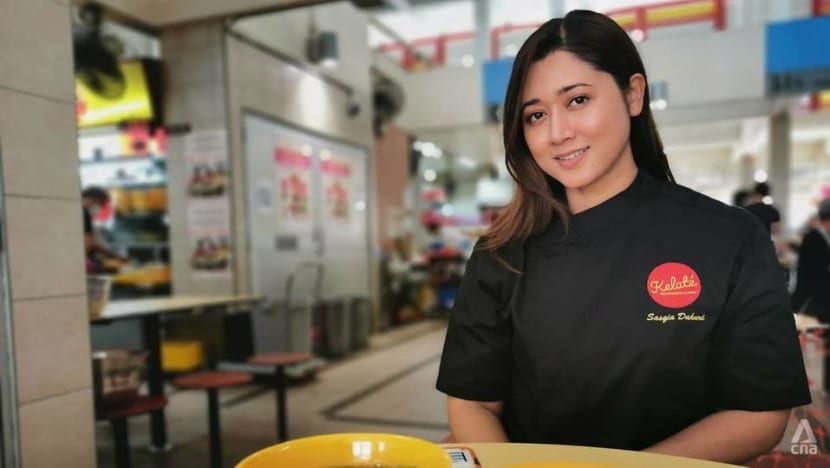
Malaysian actress Sasqia Dahuri has swapped her career in glitzy showbusiness for gritty hawker gloves to open Kelate. (Photo: Amir Yusof)
SINGAPORE: The Toa Payoh Lorong 4 hawker centre situated in Singapore’s heartlands is renowned for cheap and good local delights – Hokkien mee, kway chap and wonton noodles.
However, over the last few months, diners have another reason to visit - a stall offering Kelantanese cuisine.
The stall named Kelate, which is the colloquial name for the east coast state in Malaysia, is run by former actress Sasqia Dahuri.
The Malaysian model has starred in films such as Misteri Dilaila (2019) and Senario the Movie: Ops Pocot (2011). But she has now swapped her career in glitzy showbusiness for gritty hawker gloves after she opened Kelate earlier this year.

A year ago, due to travel restrictions, Sasqia decided to settle down in Singapore with her Singaporean husband, Muhammad Asyraff Khan.
At the height of the COVID-19 pandemic in 2020, Sasqia began to miss Kelantanese dishes like those cooked by her mother, so she took it upon herself to prepare them for her husband and his family.
READ: Crispy chicken cracklings the star ingredient in this halal Hokkien mee in Petaling Jaya
When she earned rave reviews, she decided to cook for her husband’s friends and eventually started a home-based business.
“In Malaysia, Kelantanese food is hugely popular. But I’ve been surprised by how Singaporeans have taken to it,” said Sasqia.
“When I was just trying it out, my husband invited his friends over to try the dishes. I suggested we order pizza in case they didn’t like the food, but they each ate three to five plates of laksam. Chinese, Malay… all Singaporeans love the food,” she said.
Encouraged, she decided to expand the home-based business and turn it into Kelate - a stall dedicated to Kelantanese cuisine.
THREE ITEMS ON THE MENU
Prioritising quality over quantity, Kelate’s menu features only three dishes - the recipes of which were taught to Sasqia by her mother, who is Kelantanese-Thai.
Kelate’s two mains are laksam, which is a Kelantanese variant of laksa, and mee celup, Kelantan’s take on Thai beef noodle soup.
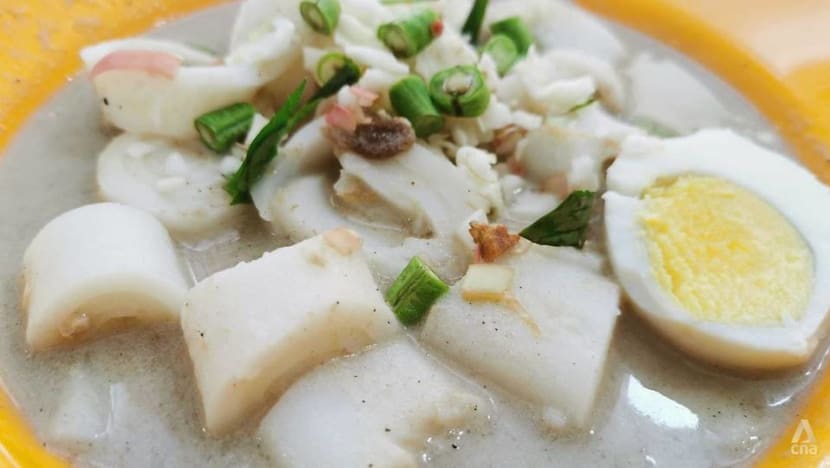
Laksam is the stall’s most popular dish, priced at S$4.90 for a small bowl, S$6.90 for medium and S$7.90 for large.
It consists of soft rice noodles rolled neatly into cylindrical shape and served in a pool of creamy gravy that is rich with coconut milk and lip-smackingly savoury with its blend of spices and flaked fish.
The dish has a good balance of creaminess, known in Malay as lemak, sweetness and spices.
While laksam’s pale gravy and white rice rolls may come across as simple, it requires tedious preparation.
The noodles are made from scratch and Sasqia takes around five hours to do so in the wee hours of every morning.
READ: Shah Alam eatery draws diners with Sarawak delights and laksa 'wrapped' in omelette
“We need to steam the noodle rolls, and every aspect has to be perfect – the temperature, type of steamer we use, how we store the rolls. People love it and it sells well, but it’s very difficult to make,” said Sasqia.
“It gets crazy sometimes, and laksam may get sold out at 11am. People come over and buy 15 to 20 packets, but that’s something we cannot control,” she added.
Her other main dish, mee celup, may seem like the secondary choice, but it packs a punch as well.
The soup noodle's broth is made from beef and chicken bones, giving it depth and a lightness in flavour. The noodles are topped with preserved mustard leaves and chunks of beef.
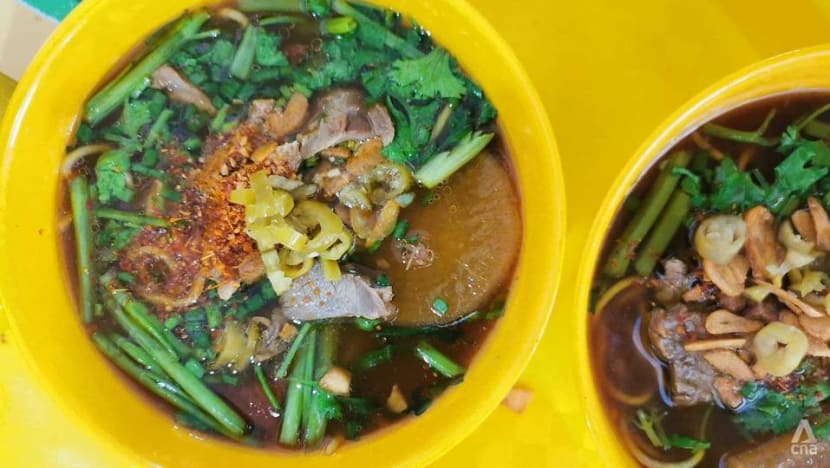
The meat is tender because Sasqia only uses specific cuts of beef.
“We only use certain parts of the beef, and we boil the meat with more stock so that the flavour is more intense,” she explained.
The prices for mee celup are the same as laksam’s.
The last item on the menu is appetiser colek malah, anchovy-vegetable fritters served with a special dip.
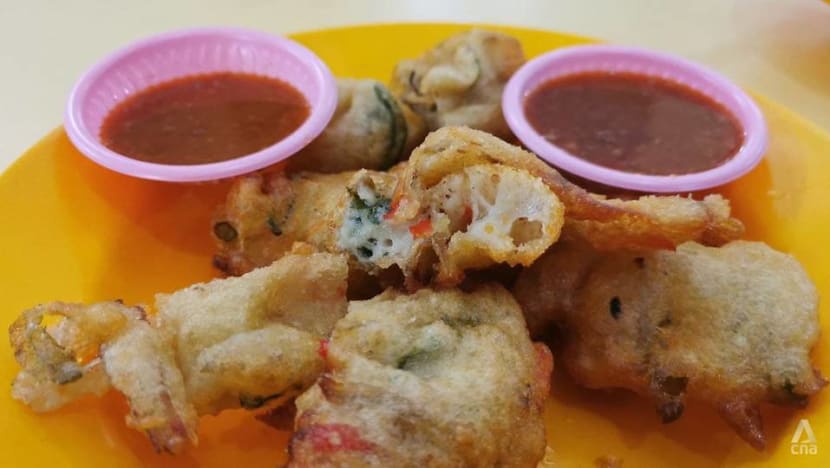
Crispy on the outside and fluffy on the inside, colek malah is a delight, especially when it is drenched in the accompanying sweet and spicy chilli sauce.
It is priced at S$4 for three pieces and S$7 for six pieces.
Sasqia explained that this dish reminded her of home the most, as many Kelantanese consume it for a midday snack.
“In Kelantan they pour the sauce on top of the fritters and eat them with a spoon,” she said.
A TASTE OF HOME FOR MALAYSIANS
Kelate has garnered encouraging reception from people in Toa Payoh, and some customers also visit from other parts of the island.
But Sasqia is especially touched by how the stall has become a gathering point for some Malaysians who have not returned home due to the COVID-19 pandemic.
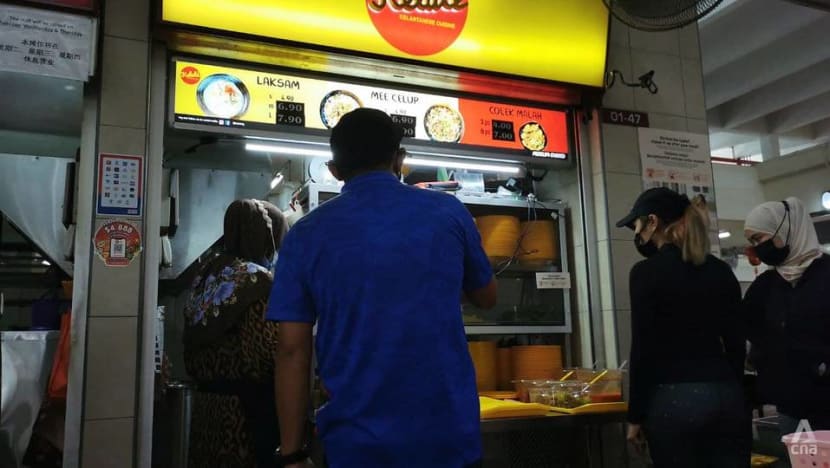
“For some of the Malaysians who come, eating these dishes has a sentimental value for them. When they eat laksam, it reminds them of stories with their grandmother, or parents, or of their experiences in their kampung and hometown,” said Sasqia.
“When they tell me this, I feel that all this hard work becomes worth it,” she added.
READ: Away from their families, Malaysians in Singapore brace themselves for a quiet Chinese New Year
One Malaysian who felt that the food reminded him of his hometown was Chia Sin Hui, who comes from Kota Bharu in Kelantan but has lived in Singapore for 30 years.
Chia told CNA that the laksam he ordered reminded him of his childhood.
“It's as good as what you get back home. Very authentic,” he added.
Meanwhile, Selen Yap, who ordered the mee celup, also had compliments.
“I’ve been working in Singapore for eight years but I’ve not tasted something so close to what I usually eat back home,” said the 30-year-old from Kuala Lumpur.
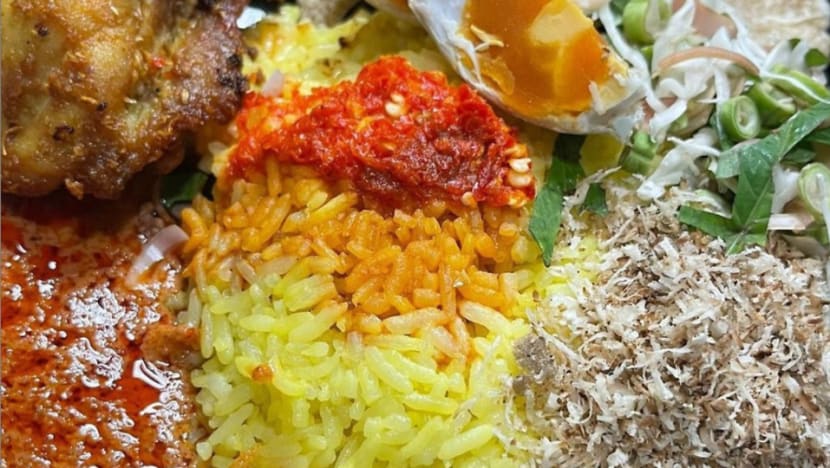
For Ramadan, Sasqia is offering two new items – nasi kerabu kuning, or yellow rice mixed with salad and sambal tumis, as well as lompat tikam, a soft rice pudding with coconut milk and gula melaka.
She has also expanded her business slightly by having a central kitchen in Clementi for food preparation and buying a company van to make deliveries.
Asked whether she would be keen to open a cafe or restaurant, Sasqia seemed hesitant.
“I like opening this humble stall in a hawker centre. A restaurant gives off a different vibe, more high-end. Hawker stalls are for everyone and I want to cater to everybody,” she said.
“I’m friends with the hawker uncles and aunties here, and it’s a nice feeling, a nice community. I like being around people, my customers and other stallholders. This is what I want,” she added.
Read this story in Bahasa Melayu here.












